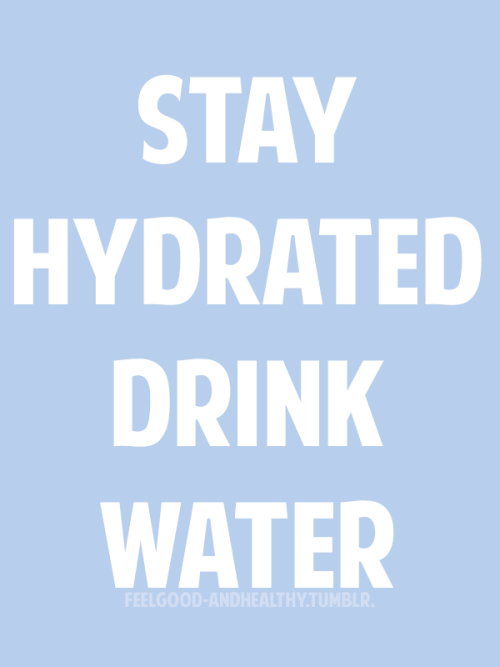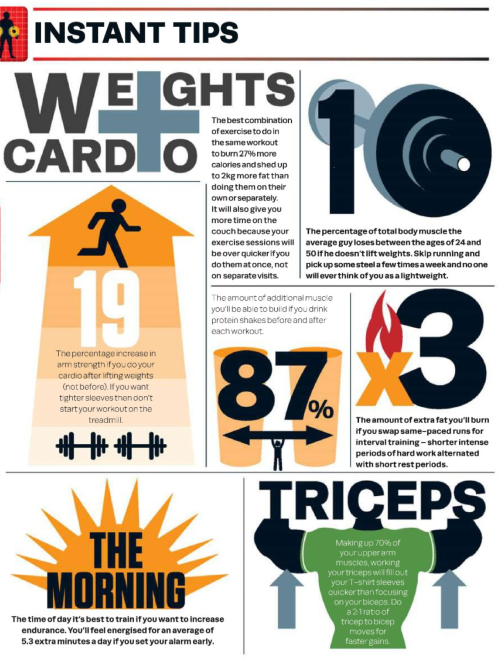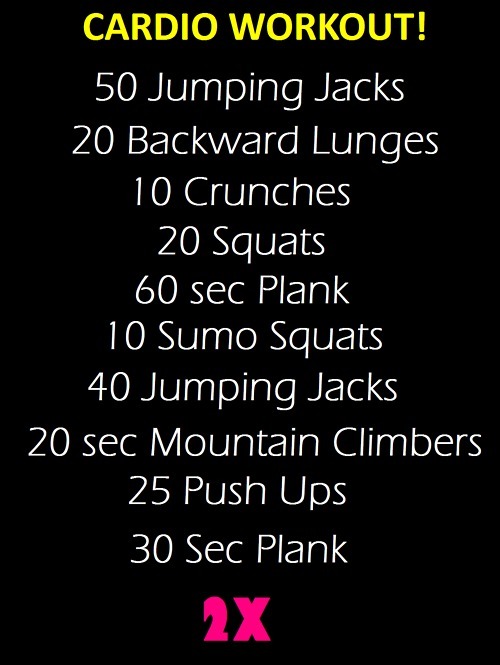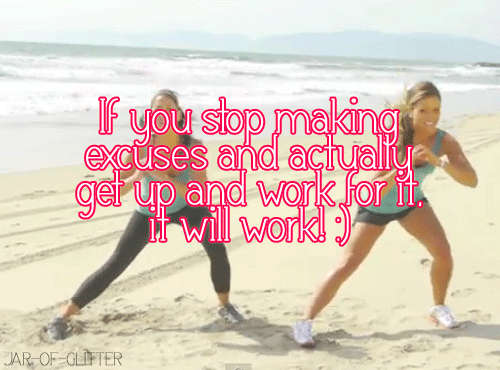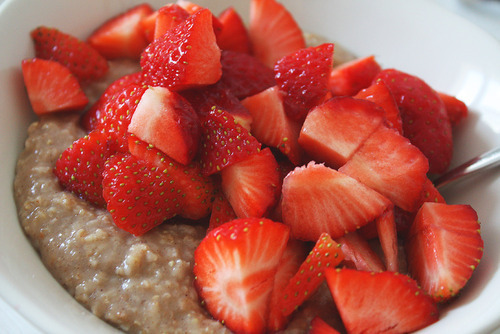
"Welcome to "Building Better Temples" where you will find the very best healthy lifestyle images - all updated daily!" No guilt trips. No banned foods. No boredom for your taste buds. Just get some practical pointers on what to put on your plate. Dig in. Healthy food recipes, fitness and workout routines, weight loss and diet information, and inspirational quotes - you will find it all! All these are used as constant daily advice and motivation to reach your goals.
Friday, September 28, 2012
Cauliflower & Couscous Pilaf
Why do I need to register or sign in for WebMD to save?
We will provide you with a dropdown of all your saved articles when you are registered and signed in.
We will provide you with a dropdown of all your saved articles when you are registered and signed in.
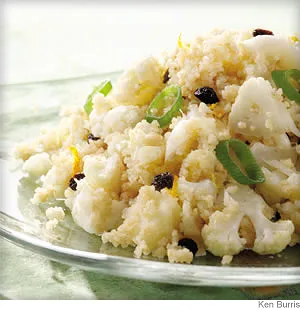
 WebMD Recipe from EatingWell.com
WebMD Recipe from EatingWell.com
Prep: 25 | Total Time: 25
- 1 tablespoon extra-virgin olive oil
- 4 cups, about 1 medium head finely chopped cauliflower florets
- 1/2 teaspoon salt
- 3/4 cup reduced-sodium chicken broth
- 1 teaspoon freshly grated orange zest
- 1/4 cup orange juice
- 1/4 cup currants
- 2/3 cup whole-wheat couscous
- 1/2 cup sliced scallion greens
- Heat oil in a large saucepan over medium heat. Add cauliflower and salt; cook, stirring, until softened, about 3 minutes. Add broth, orange zest, juice and currants; bring to a boil over high heat. Stir in couscous and scallions. Remove from heat and let stand, covered, until the liquid is absorbed, about 5 minutes. Fluff with a fork.
Thursday, September 27, 2012
Wednesday, September 26, 2012
Foods for perfect skin

Location: Philadelphia, Pa.
Cobbs Creek, Philadelphia
Turmeric

Location: Philadelphia, Pa.
Cobbs Creek, Philadelphia
Garlic

Location: Philadelphia, Pa.
Cobbs Creek, Philadelphia
Prunes

Location: Philadelphia, Pa.
Cobbs Creek, Philadelphia
Broccoli

Location: Philadelphia, Pa.
West Philadelphia, Philadelphia

Location: Philadelphia, Pa.
Cobbs Creek, Philadelphia
Tomatoes

Location: Philadelphia, Pa.
Powelton Village, Philadelphia

Location: Philadelphia, Pa.
Brewerytown, Philadelphia
Super Immunity Soup
Posted by Healthy Bitch Daily on Sep 21, 2012

This soup is like a savory smoothie. It's fast, vegan and mostly raw. If you cook cruciferous veggies (like kale) and allium veggies (like onions), the nutrients are destroyed. But if you puree them together first, they chemically bind together making a superfood, as well as keeping all nutrients in tact even when heat is applied. It's delicious and cures a cold in no time!
What You Need
2 cups kale
1 cup vegetable stock (homemade is best)
1/8 of a cup of any variety of onion (I like green onions)
1 clove of garlic
1/2 of an avocado
1 tablespoon of white miso paste
3 tablespoons of extra virgin olive oil
Juice of 1 lemon
Sea salt and pepper to taste
Related: Teff Salad With Cilantro Dressing
How to Make It
Blend all ingredients except the avocado and miso together in a food processor or blender for about five minutes until smooth and bright green. Add miso and avocado and heat through on the stove top. Or you can allow your Vitamix to heat the soup as it blends to retain live cultures in miso. Serve immediately. Variation: Add dandelion greens instead of kale when cleansing in the spring. Add half of a small cucumber and serve cold as a gazpacho in the summer.
*Recipe courtesy of Jessica at Glow Nutrition
Fitness Fads
Posted by Healthy Bitch Daily on Sep 24, 2012
What to believe and what to bag when it comes to new products, DVDs or workout trends

While you're chowing down midnight munchies in bed, you become totally convinced that yes, $19.95 is indeed worth the price of a sexy six-pack. You spend money you don't have, use it for three weeks and then it sits in your closet to take up space for eternity.
If any of that sounds familiar, stop suffering at the hands of bullshit marketing. You're better than that.
Yes, there are so many different workouts, devices and doodads to choose from, it's hard to tell what's a passing fad and what will actually get you fit. How's a girl to know what's fact and what's fiction? After all, if you're gonna spend an evening sweating from something other than sex, it damn well better be worth it.
“As Seen on TV”
As much as you'd like to believe you can get abs like Misty and Kerri by wrapping a gizmo around your tummy while sitting on your ass, it ain’t gonna happen. Between the Shake Weight, sauna suits and Thigh Masters, it seems there's no get-fit-quick gadget we won’t try. Americans spend over $30 billion a year on weight loss products. That’s a serious hit to the bank account when it doesn't make a dent in your waistline. Here's the thing: Gadgets may help out a bit, but there's no replacement for actually moving your own body weight (read: exercise) to get fit. Just because something has that "As Seen on TV" sticker, that doesn't mean it's credible. Plenty of idiots can invent a product and market it on TV. Plenty of idiots watch TV. Catch our drift?
Too Good to Be True
Like beautiful men that always turn out to be gay, if a program or fad seems too good to be true, it probably is. There's no “secret formula," “magic pill” or 10-minute workout that will help you lose 80 pounds (or even five). Results take hard work, discipline and sweat—there is no shortcut. Whether it's your workout or your diet, depriving yourself in one area and concentrating entirely on another is not the way to see results.
Back to Basics, Babe
Rather than chasing the latest and greatest, stick to the tried and true. Want washboard abs? Stay away from the processed food, do crunches or take a Pilates lesson. Want slim legs and a nice, round tush? Do lunges, run stairs or try sprints in the sand. Think that new halter top will look drop-dead gorgeous with sexy shoulders? Do lateral raises or shoulder presses using small weights or bands. Push ups and chest presses will give your bust a boost better than any miracle bra.
1-2-3 Injury
Along the same lines, if you're tantalized by a popular fad, do your homework. Make sure the instructors or creators actually have kinesiology degrees and are certified to tell you what the hell to do. Is the workout something feasible for your lifestyle? Do you actually know anyone that has gotten results using it? Is it appropriate for your body type or fitness level? While many of the popular workouts nowadays (bootcamp, P90X, etc.) are awesome for getting results, a lot of them require you to push very hard. For newbies or people that aren't in shape, this often spells disaster in the form of injuries from overusing muscles or training too hard, too fast.
Stick With What Works
It’s fine to mix it up with new equipment, workouts and training plans. A friend invites you to a new fitness class at her gym, so give it a try. You feel like you need to limber up and want to incorporate some yoga into your life, so absolutely do it. Just remember that no single product or routine will “revolutionize” you or help that one little problem area, no matter what it is.
In a culture where we're taught to be perfect, like, now, don't forget that simple tweaks to your day—walking to the store, riding your bike with the kids—will help you stay slim naturally, no straining required. Just keep eating healthy, feeling happy and staying on the move.
Rome wasn’t built in a day. A perfect booty might take a while. Chill.
What workout fads have you been sucked into? Tell us in the comments section below!

Lori Kenyon, Certified Nutrition Coach
Former corporate attorney and master of the loop-hole, in 2010, Lori co-founded the kick-ass raw organic juice company, Ritual Wellness. Lori now spends her time producing a healthy alternative to chemical ridden, nutrient void drinks in the market, and writing to help educate people about healthy food choices.
Wheatgrass Benefits
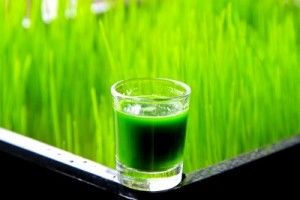
Touted as a panacea for all ills by its proponents, wheatgrass sits at the top of the list of ‘superfoods’. This easily-available, nutrient-filled natural food is believed to boost immunity, aid digestion, and improve the toxin-removal process in the body.
Read on to know what wheatgrass is, how you should use it and how much, its nutrition value, its numerous benefits, and the findings of the scientific studies done on it.
What is wheatgrass?
Wheatgrass, as the name suggests, is the young grass of the common wheat plant. It is grown in the temperate zones of the United States and Europe. The plant can be grown outdoors or indoors.
How should you consume wheatgrass and in what quantities
Wheatgrass is generally not eaten in its natural form, because it is not easy to digest. It is usually consumed in the form of juice. To extract wheatgrass juice, use a manually operated juicer and not the standard automatic juicer, as experts believe wheatgrass juice is beneficial only when extracted manually. Wheatgrass is also available in many other forms including powders, capsules, and tablets.
To get all the health benefits, experts recommend that you drink 1 to 4 ounces of fresh wheatgrass juice daily.
Nutritional value of wheatgrass juice
Nearly all minerals and vitamins that we require for good health are present in high quantities in wheatgrass juice. Wheatgrass contains 70% chlorophyll, the green pigment that gives the wheat grass its dark green color. It is also rich in essential minerals such as phosphorus, sodium, potassium, magnesium, calcium, iron, zinc, cobalt, sulphur, and Vitamin B complex, C, K, and E. Wheatgrass also has 19 types of amino acids.
The following table lists the nutrition content of 1 ounce of wheatgrass juice
| Nutrients | Quantity |
| Protein | 860 mg |
| Vitamin E | 880 mcg |
| Vitamin B12 | 0.30 mcg |
| Vitamin C | 1 mg |
| Beta-carotene | 120 IU |
| Magnesium | 8 mg |
| Phosphorus | 21 mg |
| Iron | 0.66 mg |
| Potassium | 42 mg |
| Calcium | 7.2 mg |
Health benefits of wheatgrass
- It builds red blood cells
Increased production of red blood cells and the blood’s improved capability to deliver oxygen, in turn, normalizes blood pressure, improves metabolic rate, and stimulates the production of enzymes.
- It detoxifies the body
- It is a potent energizer
- Reduces the side effects of chemotherapy
- It treats ulcerative colitis
- It boosts immunity and aids in recovery from illnesses
In addition to the above, other purported benefits of this ‘superfood’ are:
- It aids weight loss
- It reduces bad breath
- It is effective in the treatment of certain skin diseases
- It regenerates body cells and is a powerful supplement for body builders
- It relieves toothaches
- It prevents premature hair graying
Health benefits of wheatgrass have not been extensively studied. That said, the few studies that have been done so far have shown encouraging results. Let’s take a look at them-
A 2002 study found that wheatgrass juice reduced the symptoms of ulcerative colitis
In the study, 21 ulcerative colitis patients were given wheatgrass juice. Patients recorded a significant reduction in their symptoms.
A pilot study declared that wheatgrass juice decreased the frequency of blood transfusions required by young patients with thalassemia
In the study, children suffering from thalassemia were asked to consume 100 ml of juice every day. Approximately half the subjects recorded decreased need for blood transfusions.
A small study found that wheatgrass juice reduced the need for blood transfusions in transfusion-dependent myelodysplastic syndrome patients
Wheatgrass juice increased the time between successive blood transfusions for blood transfusion-dependent patients with myelodysplastic syndrome.
A pilot study concluded wheatgrass juice reduced the need for bone marrow-building and blood-building drugs in breast cancer patients undergoing chemotherapy
Patients who consumed wheatgrass juice demonstrated a reduced need for bone marrow-building and blood-building drugs during chemotherapy. Wheatgrass juice did not affect the efficacy of cancer treatment.
Caution
Individuals who have gluten intolerance or wheat allergy should consult their healthcare provider before using wheatgrass or wheatgrass juice. Wheatgrass can cause headaches, vomiting, and/or nausea. Consult your doctor if you experience any unwanted side effects due to wheatgrass. Pregnant women and breastfeeding mothers should speak to their doctor before adding wheatgrass to their diet.
————————————–
References:
http://en.wikipedia.org/wiki/Wheatgrass
http://www.webmd.com/food-recipes/wheatgrass?page=2
http://www.livestrong.com/article/121482-health-benefits-wheatgrass-juice/
http://www.energiseforlife.com/wordpress/2009/05/22/wheatgrass-health-benefits/
http://www.luxurybeautybar.com/health-benefits-of-wheatgrass/
Who Moved My Cheese?
Posted by Healthy Bitch Daily on Sep 26, 2012
Nutritional yeast is vegan's BFF. Here are four reasons to get friendly with it.

You knew he wasn't good for you anymore, but cutting the cord for good? That shit was tough. And while it ain't always easy living the cheese-less life, you've probably picked up a new beau in the form of nutritional yeast. Yes, it's deliciously nutty, cheesy and amazing in every way, but it's more than just a pretty face. That magic yellow dust packs several important health benefits, giving you all the more reason to indulge:
1. B Vitamins. In the same way that your pee turns neon when you take lots of vitamins, this is the reason nutritional yeast is yellow--the color comes from the B vitamin riboflavin. Most brands of nutritional yeast are also packed with vitamin B12—that oh-so-important one for us veg girls. About one tablespoon will give you all the B12 you need for a day, so eat up.
2. Fiber. We probably don't have to remind you why fiber is important, but suffice to say it kicks heart disease, diabetes and high blood pressure to the curb. One ounce of nutritional yeast contains about 7-8 grams of fiber, which is more than enough to keep you regular and healthy. Add a little sprinkle to your veggies and it's double the fiber, double the fun.
3. Fat and Sodium. Unlike cheese (or even vegan cheese), nutritional yeast is low in both fat and sodium, making it a way better option when you're jonesin' for some comfort food. Blend some raw cashews with a little nutritional yeast, non-dairy milk and salt/pepper to make a yummy sauce for your mac and (no) cheese.
3. Protein. With about 5 grams of protein per tablespoon, you can't go wrong adding it into veggie-based soups or pasta dishes.
4. Zinc. Nutritional yeast is also a great source of zinc—that snazzy little mineral that helps out your immune system, your sense of smell and taste and your sex hormones. Since many vegans and vegetarians can form a zinc deficiency, it's important to get enough in your diet or through supplements.
Pick up nutritional yeast at your local health food store and fulfill all your cheesy fantasies. Need recipe inspiration? Here's a dish from Joanna at Vegan WifeStyle that will have you salivating:
Cheesy Cauliflower Bake
What you Need
1 head of cauliflower (about 3 cups chopped)
1 head of broccoli (about 2 ½ cups chopped)
1 1/2 cups of uncooked quinoa pasta
4 tablespoons organic tamari or soy sauce
2 cups of almond milk
1 3/4 cups of nutritional yeast (1 1/4 in mix, 1/2 to sprinkle on top)
2 Ener-G egg replacers
1 can of organic sweet peas
Salt and pepper, as needed
How to Make It
Preheat oven to 375 degrees. Line a glass pan with foil and set aside. Chop cauliflower into large chunks and run across a cheese grater (if it has two sides, grate across the larger holes). Chop the broccoli into chunks (golf ball size) then cut each in half. In a large bowl combine almond milk, soy sauce and nutritional yeast. Combine egg substitute and water, stir until completely dissolved, then add to the sauce mix (make sure it's dissolved before adding; this will help the yeast and milk become creamier). Add the cauliflower, broccoli, peas and the quinoa pasta to the bowl and mix. (Note: It will be a little runny, but will thicken up while cooking.) Pour the mixture into the glass pan, sprinkle the remaining 1/2 cup of nutritional yeast on top, then cover with foil. Cook for 25-30 minutes, until pasta is cooked. Uncover, then cook 10 more minutes until the top starts to crisp. Enjoy!
What's your favorite way to use nutritional yeast? Let us know in the comments!

Mara Tyler, Managing Editor
Mara Tyler is the gal behind Cheap And Simple Vegan Recipes, a no-nonsense blog for vegans who want easy and affordable meals. With a mission to make veganism accessible to anyone, she promotes progress, not perfection. When she’s not making a mess in the kitchen, she can be found reading bad chick lit, scouting out new indie bands or attempting to find bliss in yoga. Visit her website or find her on Facebook at CheapSimpleVegan or follow her on Twitter @CheapSimpleVeg.
Low-Fat Caramel Fruit Dip
I love to serve this as an after school snack for the kiddos, though I try not to do this too much because they love fruit in it’s purest form and I dont’ want to change that. You can use it in fruit, on baked goods, on oatmeal bake, with pretzels, graham crackers…… The possibilities are endless!
Low-Fat Caramel Fruit Dip
1 cup of plain yogurt
1/3 cup of caramel ice cream topping
Mix ingredients above until it’s a smooth creamy brown. Adjust it to your liking once it’s whipped. You can add more yogurt if it’s too sweet or it’s not sweet enough then add more caramel.
Low-Fat Caramel Sauce
You can also drizzle this yumminess on baked goods. Use same recipe as above but place in fridge before using so it’s not so runny.
Gluten-Free Baking Tips
Posted by Healthy Bitch Daily on Sep 25, 2012
Say goodbye to cookies that are hard as rocks and totally lifeless cupcakes. It's time to up the dessert ante with these gluten-free baking tips.

It may still be hotter than your crotch at a "Magic Mike" showing, but fall baking season is officially here.
Visions of pumpkin pies, ginger snaps and cinnamon bread are dancing in your head. But wait a minute—you've decided to ditch the gluten and you're totally clueless about how to recreate your favorite family recipes. Mom will have a shit fit if you screw up that Thanksgiving dessert, so better start practicing now.
The first time I baked a gluten-free cake was on the eve of my brother's 16th birthday. I had recently found out that I had celiac disease, and my family decided they would all support my new lifestyle by choosing a party dessert that I could enjoy as well.
Well, dearies, I can easily say that not a single one of us enjoyed that barfy cake when we sat down to eat it. I painfully watched as my brother sliced through the chocolate icing I had spent hours preparing, his bicep flexing as he attempted to push the knife through the concrete mass. Even though everyone attempted to lie and spare my feelings, I knew there was nothing delicious about it.
It was a gluten-free #fail.
Since that day, I can safely say I've learned a thing or two about gluten-free baking and the truly delicious desserts that can be created without the addition of wheat, barley, rye or oats.
Take my advice, cupcake, and I promise you'll lessen your chances of crumbly cookies, sinking cakes and loaves of bread that turn out completely raw in the middle. No one wants to eat that crap.
1. Don't touch the cookies. Seriously, leave them alone. The general baking rule of thumb is to remove cookies from a baking sheet and allow them to cool completely on a wire rack. When it comes to gluten-free cookies, go ahead and leave 'em sitting on the baking sheet for five to 10 minutes and then transfer them to a wire rack to fully cool. The average gluten-free cookie can be a bit delicate when it first pops out of the oven, so letting it settle for a bit will give you complete dunk-able cookies. And who wouldn't want that?
2. Watch out for flour substitutions. Sure, you love Great Aunt Mildred's recipe for carrot cake, but it's chock-full of glutenous flours that will hurt your precious belly. Before you go ahead and substitute the flour for any ol' gluten-free option, you may want to consider what kind you are using first. Brown rice, white rice and sorghum flours are lovely when used as main flours in a recipe. On the other hand, flours like quinoa, coconut, almond and buckwheat (don't let the name fool you—it's gluten-free) are dense and should be used rather sparingly. Make your own gluten-free mixture by blending those guys with one of the lighter flours and a starch, like arrowroot or tapioca, and your baked goods will turn out totally tasty.
3. Turn down the temp in the kitchen. Gluten-free goodies tend to cook a little fast on the outside edges while remaining a little soft in the center. If you notice this is happening, then decrease the oven temperature by 20 – 25 degrees. You might also want to try lightly placing a sheet of foil on top of cupcakes or brownies that are baking too fast; this will help the center to bake while keeping the edges from completely charring.
4. Don't be afraid to spice up. Gluten-free flours have a tendency to taste a bit... ummm...shall we say, harsh? (Have you ever tried straight up chickpea flour? Yeah, don't.) Mask the flavors that come hand-in-hand with gluten-free mixes by adding vanilla extract (make sure it's gluten-free), cinnamon, nutmeg and other spices that can make chocolate cake or apple pie taste like magic.
All in all, keep that pretty smile on your face, babycakes. The truth is—you're gonna make some fairly crappy desserts in the process of learning how to bake gluten-free. Keep in mind that some baked goods can be recycled—flat bread makes awesome bread crumbs—and others are better off friends with the bottom of the garbage can.
My gluten-free cake went down in history as the worst thing I've ever baked, but it also provides a funny story that my family likes to recount on a regular basis. It's OK, darlings, go ahead and giggle at your kitchen failures. I laugh about it now, too.
Got any other gluten-free baking tips? We want to hear! Leave a note in the comments section below.

Caroline Shannon-Karasik, Contributing Writer
Caroline Shannon-Karasik is the founder of The G-Spot Revolution , a gluten-free, healthy living blog built upon the premise that there is not a one-size-fits-all prescription for total wellness. Whether you call it your personal health "spot", or ooo-la-la recipe, that serendipitous life balance is yours to define –– and The G-Spot was created to help you do just that. Standing behind her mission to share health information through her writing, Caroline is a freelance writer for several publications, including REDBOOK and Breathe magazines. Follow her on Twitter @TheGSpotRev or read more at www.carolineshannon.com.
Subscribe to:
Posts (Atom)













